How To Grow And Care Monstera Lechleriana

Monstera lechleriana, a captivating member of the Araceae family, is a tropical plant cherished for its lush, vibrant foliage and unique fenestrations (natural leaf holes). Often confused with its more famous cousin, Monstera deliciosa, Monstera lechleriana stands out with its own distinctive beauty and growth patterns. This guide delves into every aspect of Monstera lechleriana, from understanding its origins to mastering its care, ensuring you can cultivate this exotic plant with confidence and success.
Understanding Monstera Lechleriana
Origin and Natural Habitat
Monstera lechleriana hails from the tropical rainforests of Central and South America, particularly thriving in countries like Peru, Colombia, and Brazil. In its natural habitat, this plant is an epiphyte, meaning it often grows on other plants or trees, absorbing nutrients and moisture from the air and rain. The humid, warm climate of these regions provides the perfect conditions for Monstera lechleriana to flourish, with plenty of indirect sunlight filtering through the dense canopy above.
Unique Characteristics
One of the most remarkable features of Monstera lechleriana is its striking leaves, which develop deep, irregular fenestrations as they mature. These natural holes not only give the plant its unique appearance but also help it withstand heavy rain and wind by reducing the surface area that could catch the elements. Additionally, the leaves of Monstera lechleriana are typically smaller and more elongated than those of Monstera deliciosa, and they tend to stay relatively compact, making this plant a perfect choice for indoor gardening.
Planting Monstera Lechleriana
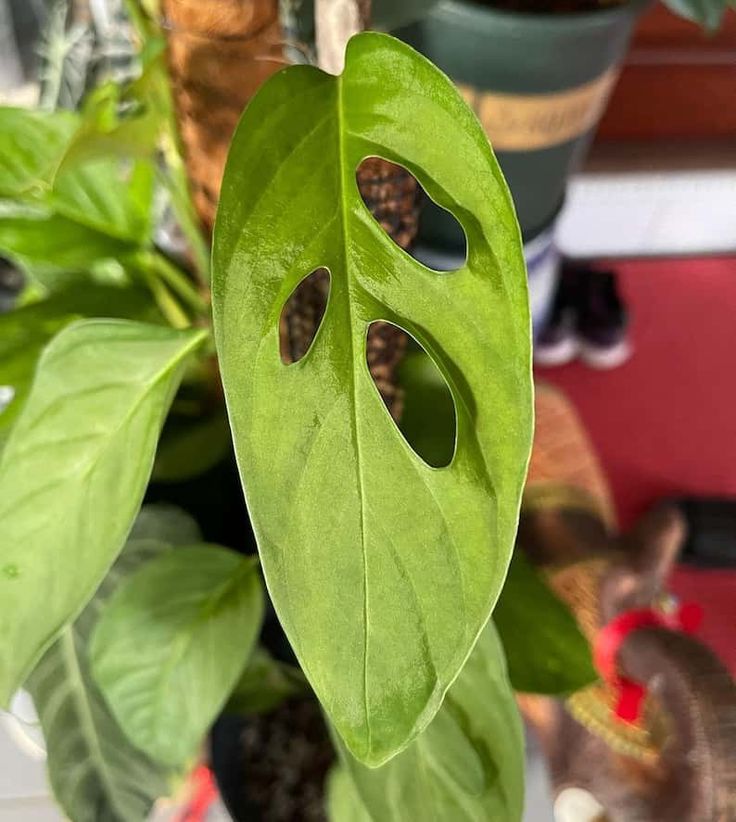
Choosing the Right Spot: Indoors vs. Outdoors
When deciding where to place your Monstera lechleriana, consider both indoor and outdoor options. Indoors, it thrives in bright, indirect light. A spot near a north or east-facing window is ideal. Outdoors, it can grow under the dappled shade of taller plants or trees, mimicking its natural habitat. Ensure it is protected from direct, harsh sunlight, which can scorch its delicate leaves.
Soil Preparation
Monstera lechleriana prefers well-draining soil to prevent root rot, a common issue for tropical plants. A mixture of potting soil, peat, and perlite or orchid bark works well. This blend retains moisture without becoming waterlogged, allowing the roots to breathe. Adding organic matter, like compost, can also enhance the soil’s nutrient content, supporting healthy growth.
Planting Steps: Step-by-Step Guide
- Select a Pot: Choose a pot with drainage holes to avoid water accumulation.
- Prepare the Soil: Mix potting soil, peat, and perlite or orchid bark.
- Planting: Place the Monstera lechleriana in the pot, filling around the roots with your soil mix. Ensure the plant is positioned at the same depth it was in its original container.
- Watering: Water thoroughly, allowing excess water to drain out.
- Placement: Position the plant in a spot with bright, indirect light.
When I planted my Monstera lechleriana, I found that using a transparent pot initially helped me monitor root development and soil moisture levels, ensuring I didn’t overwater the plant.
Monstera Lechleriana Care
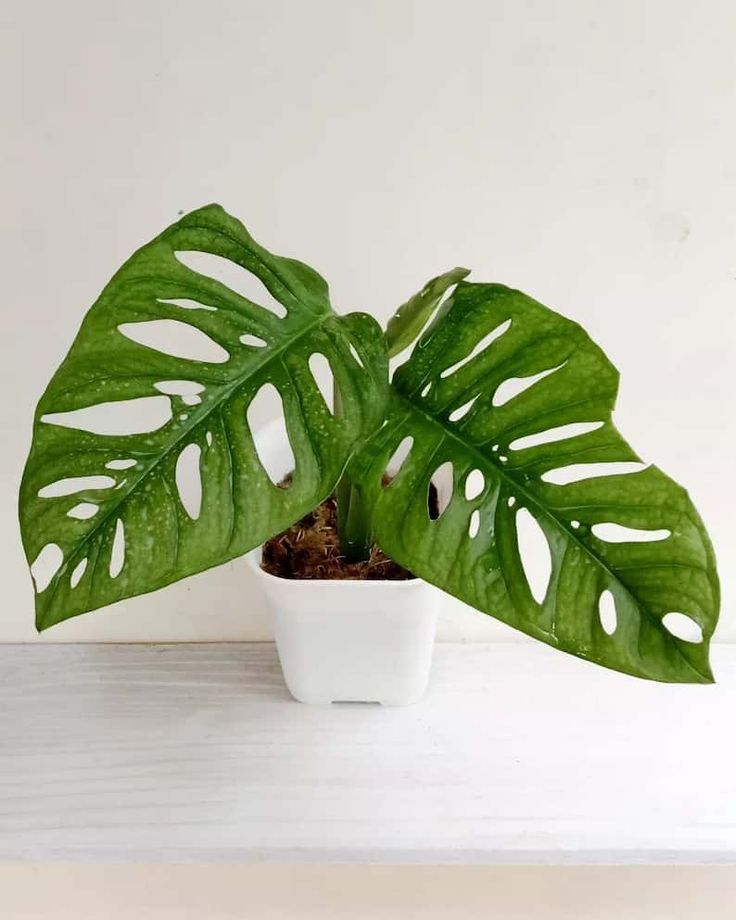
Light Requirements
Monstera lechleriana thrives in bright, indirect light. Too much direct sunlight can cause leaf burn, while insufficient light can lead to leggy growth and smaller leaves. An east-facing window provides gentle morning sunlight, which is ideal. If natural light is limited, consider using a grow light to supplement. Rotate the plant occasionally to ensure even light distribution and prevent it from leaning towards the light source.
Best Soil Mix
The best soil mix for Monstera lechleriana is one that mimics its natural epiphytic environment. A combination of potting soil, peat, and perlite or orchid bark creates an airy, well-draining medium. I often add a handful of activated charcoal to my soil mix to improve drainage and prevent odors, especially in indoor environments.
Water Requirements
Monstera lechleriana prefers to be kept moist but not waterlogged. Water when the top inch of soil feels dry to the touch. Ensure the pot drains well to prevent root rot. I water my Monstera lechleriana once a week during the growing season and reduce watering frequency in the winter, always adjusting based on the soil’s moisture level.
Temperature and Humidity
Monstera lechleriana thrives in temperatures between 65-80°F (18-27°C) and high humidity. It can tolerate lower humidity but will flourish in a humid environment. I use a humidity tray and mist the leaves regularly to maintain humidity levels, especially during dry winter months.
Fertilizer
A balanced, water-soluble fertilizer applied every 4-6 weeks during the growing season supports healthy growth. Reduce feeding during the winter months. I use a diluted fish emulsion fertilizer every month during spring and summer, which provides a steady supply of nutrients without overfeeding.
Pruning
Prune Monstera lechleriana to maintain its shape and remove any dead or damaged leaves. Pruning can also encourage bushier growth. I prune my plant in early spring, which helps it recover quickly and stimulates new growth. Using clean, sharp scissors or pruning shears is crucial to avoid introducing infections.
Grow and Care for Monstera Burle Marx Flame
Propagating Monstera Lechleriana
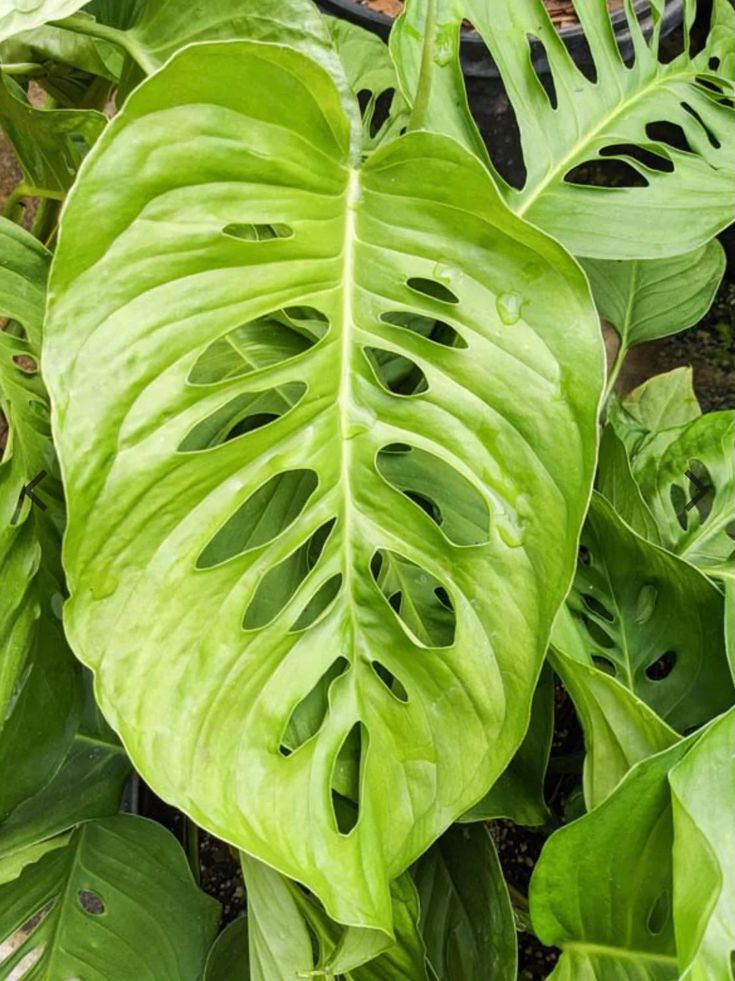
Methods
Propagation of Monstera lechleriana can be done through stem cuttings or air layering.
- Stem Cuttings:
- Cut a healthy stem with at least one node and aerial root.
- Place the cutting in water or a moist soil mix.
- Keep it in bright, indirect light and maintain high humidity.
- Once roots develop, transplant the cutting into a pot with well-draining soil.
- Air Layering:
- Choose a healthy stem and make a small cut just below a node.
- Wrap the cut area with moist sphagnum moss and cover with plastic wrap to retain moisture.
- Once roots develop within the moss, cut below the new root system and plant in soil.
Personal Tips
I have had great success with water propagation. By placing cuttings in a clear jar, I could monitor root development and ensure optimal conditions. Additionally, using rooting hormone on the cuttings boosted root growth and increased the success rate.
Potting and Repotting
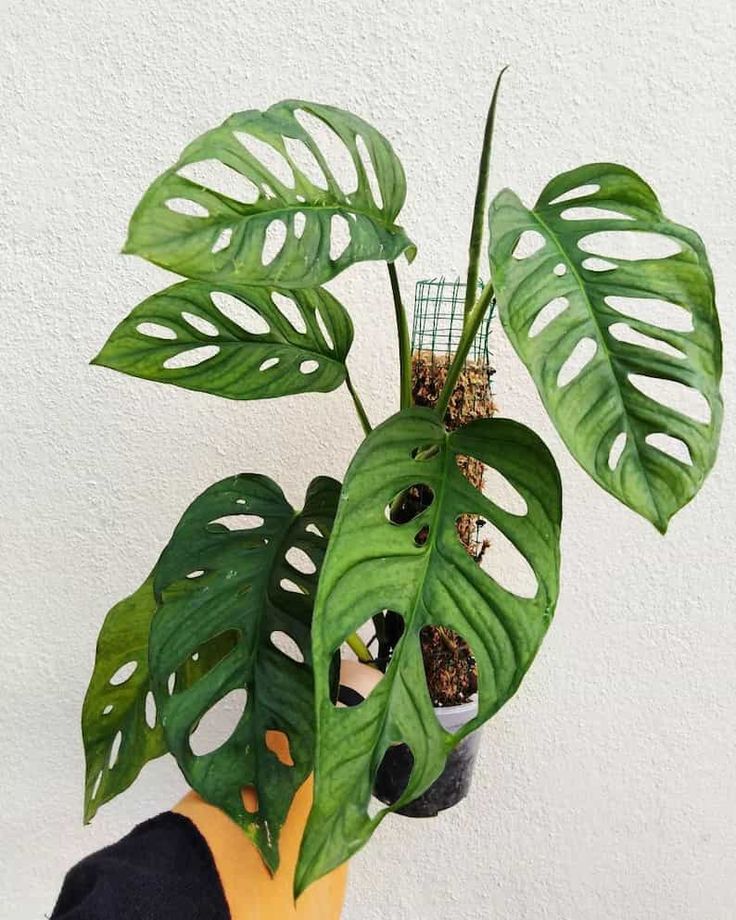
Choosing the Right Pot: Best Types of Pots
Choose pots with good drainage to prevent waterlogging. Terracotta pots are excellent as they allow for air exchange and excess moisture evaporation. I prefer using ceramic or plastic pots with drainage holes, lined with a layer of gravel or pebbles at the bottom to enhance drainage.
Repotting Steps
Repot Monstera lechleriana every 1-2 years or when it outgrows its pot.
- Prepare the New Pot: Choose a slightly larger pot with drainage holes.
- Remove the Plant: Gently remove the plant from its current pot, being careful not to damage the roots.
- Examine the Roots: Trim any dead or rotting roots.
- Plant in the New Pot: Place the plant in the new pot, fill with fresh soil mix, and water thoroughly.
I found that repotting in early spring allows the plant to recover quickly and take advantage of the growing season. Using a support, such as a moss pole, helps the plant climb and grow vertically, mimicking its natural habitat.
Common Pests & Plant Diseases
Pest Identification
Common pests that can affect Monstera lechleriana include spider mites, mealybugs, and aphids.
- Spider Mites: Tiny, spider-like pests that leave fine webs on the plant.
- Mealybugs: Small, white, cotton-like pests found in leaf axils and on stems.
- Aphids: Small, green or black insects that cluster on new growth.
Disease Identification
Common diseases include root rot, caused by overwatering, and fungal infections.
- Root Rot: Symptoms include yellowing leaves and a foul smell from the soil.
- Fungal Infections: Look for spots or patches on leaves, often caused by high humidity and poor air circulation.
Treatment and Prevention
- Spider Mites: Use insecticidal soap or neem oil and maintain high humidity to deter these pests.
- Mealybugs: Remove manually with a cotton swab dipped in alcohol, and use insecticidal soap.
- Aphids: Spray with water to dislodge them, and use neem oil or insecticidal soap.
For diseases, ensure proper watering practices and improve air circulation. Remove affected parts and treat with fungicides if necessary.
Troubleshooting Common Problems
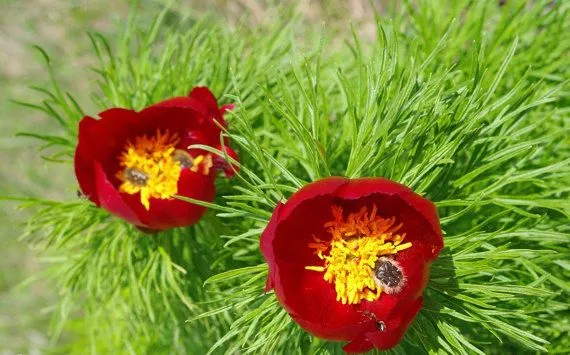
Poor Flowering
Monstera lechleriana rarely flowers indoors. Ensure optimal light, humidity, and fertilization to encourage flowering, though it may still be uncommon.
Yellowing Leaves
Yellowing leaves can result from overwatering, poor drainage, or nutrient deficiencies. Adjust watering practices, ensure well-draining soil, and provide balanced fertilization.
Stunted Growth
Stunted growth may be due to insufficient light, poor soil, or inadequate fertilization. Ensure the plant receives enough indirect light, use nutrient-rich, well-draining soil, and feed regularly during the growing season.
Fungal Infections
Fungal infections can be prevented by maintaining proper air circulation, avoiding overwatering, and using fungicides if necessary. Remove and destroy affected leaves to prevent the spread.
Seasonal Care Tips
Spring and Summer
During the growing season, increase watering frequency and fertilize regularly. Ensure the plant receives ample bright, indirect light and maintain high humidity.
Fall and Winter
Reduce watering frequency and halt fertilization. Ensure the plant is not exposed to cold drafts and maintain adequate humidity, especially in heated indoor environments.
Conclusion
Monstera lechleriana, with its striking foliage and manageable size, is a delightful addition to any plant collection. By understanding its natural habitat and providing appropriate care, you can enjoy the beauty of this tropical plant year-round. From proper planting and routine care to addressing common pests and diseases, this guide equips you with the knowledge to cultivate Monstera lechleriana successfully. Happy gardening!
